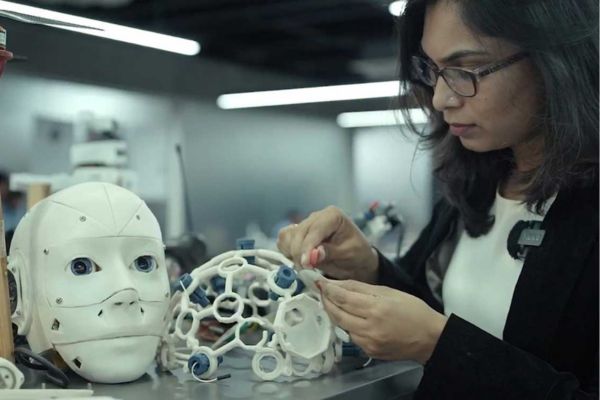Woxsen University’s AI Research Centre developed an AI-Driven Bio-Induced Necrobotic System, a pioneering advancement in robotic-assisted surgery. This innovation integrates biologically derived actuators, real-time AI control, and sustainable design principles to support high-precision, minimally invasive surgical procedures.
The system stands out for its use of biodegradable, biologically sourced materials such as repurposed spider exoskeletons and silk fibers. These components replace traditional synthetic polymers and metals, drastically reducing both environmental impact and post-operative medical waste. This approach supports carbon-neutral surgical practices and aligns with global healthcare sustainability goals.
Designed for high-precision, minimally invasive procedures, the necrobotic system is particularly suited for delicate fields such as neurosurgery, ophthalmology, and cardiovascular microsurgeries. In neurosurgery, the system enables tumor removal with minimal collateral tissue damage. In ophthalmology, it facilitates operations like cataract extraction and retinal repair, while in cardiovascular settings, it supports intricate procedures such as microvascular suturing and vessel repair. Early design assessments show a 70% increase in surgical precision and a 50% reduction in tissue trauma, promising a dramatic improvement in patient outcomes.
A significant feature of the system is its support for AI-powered telesurgery. With real-time imaging and adaptive machine learning, surgeons can perform procedures remotely in underserved or geographically distant regions. The platform addresses key challenges in remote operations such as latency, precision, and risk mitigation through predictive modelling and AI-based correction protocols.
Advanced AI algorithms enable real-time responsiveness, allowing the system to adjust motion and force based on intraoperative feedback. This ensures enhanced accuracy and safety, especially in complex microsurgical environments. The system also incorporates manual override features, maintaining surgeon control when required.
To support real-world implementation, Woxsen University is collaborating with hospitals and research institutions to test the technology in clinical settings. These partnerships aim to validate safety, biocompatibility, and performance, and generate evidence for regulatory approvals. Discussions are underway to initiate pilot programs in surgical departments, laying the foundation for scaled deployment.
Dr. Hemachandran K, Director of the AI Research Centre at Woxsen University, highlighted the transformative impact of this innovation, stating, “At Woxsen, we are building the future of surgery—where sustainability, artificial intelligence, and human expertise converge to redefine patient care. This system is more than a technological milestone; it’s a vision of how healthcare can evolve responsibly and equitably.”
Recognizing the need for professional upskilling, Woxsen University will launch a certification program in AI-Driven Surgical Robotics through its AI Research Centre. The program will include virtual simulations, hands-on workshops, and live mentoring in partnership with leading hospitals. This initiative is designed to prepare surgeons for the future of AI-integrated, sustainable surgical care.
With growing momentum toward sustainable innovation in global healthcare systems, Woxsen University’s AI-driven necrobotic system represents a significant leap forward. It not only addresses the rising need for precision-driven, minimally invasive surgeries but also sets a benchmark in environmentally responsible medical technology.
















